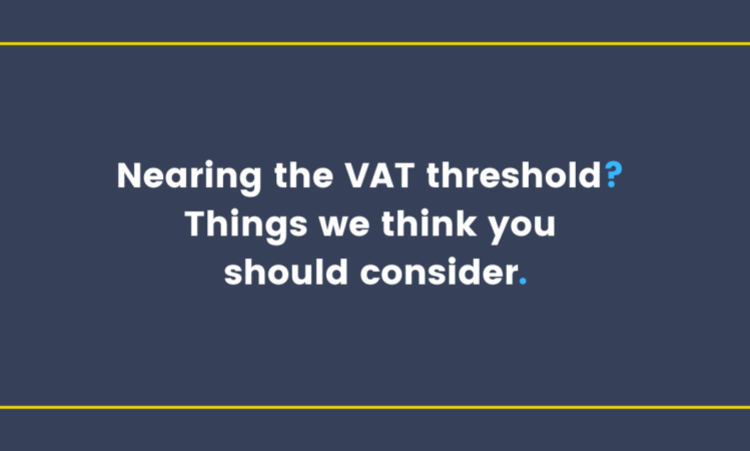Nearing the VAT threshold – things we think you should consider
Posted on 8th December 2022 at 12:51
If your turnover is nearing the VAT threshold (currently £85,000 turnover), it’s a great sign that your business is growing.
As a business owner, being VAT registered will mean that you have some additional considerations and responsibilities. We’ve detailed below what we think are some key points you need to be aware of and prepared for:
1. Make sure you are tracking your rolling turnover – vatable turnover is calculated on a rolling 12 month basis, rather than running in line with your trading period or the tax year. So you should be tracking this month by month if you think you are nearing the £85k registration threshold. You’ll have 30 days from the end of the month that you passed the threshold in to register.
2. Ensure you are calculating taxable turnover accurately – if you have different types of services are they all liable to VAT or does this include exempt items. Your turnover doesn’t include things like money injected into your business.
3. Communicate with your clients/customers – remember the VAT isn’t yours, so it isn’t a price or profit increase to you. We find that when this isn’t communicated business owners have a tendency of not adjusting pricing to reflect that they now need to charge VAT which therefore dramatically changes their profit margins – not for the better.
4. Pick a software that will help with your record keeping and compliance that you’ll be required to do under Making Tax Digital (MTD) – most businesses submit their information to HMRC on a quarterly basis. Under MTD rules you are required to submit the VAT returns via a digital platform, so manual records are a thing of the past.
5. Review your VAT scheme – by this we mean the way your VAT would be calculated. There are two methods cash and accrual, but then depending on your size and sector there are also schemes such as the Flat Rate Scheme which can be more beneficial and simplified for small businesses.
6. Pre-registrations reclaims – there are certain items such as VAT on assets, stocks and professional fees that you are able to claim the VAT back on for a period prior to your VAT registration date. This can help with the impact of the liability on the first return that you submit.
7. Plan for growth – if you have reached the VAT threshold, from our experience clients should have the plan to exceed this at pace where they can. Being VAT registered brings you some more administration duties, the need to tackle pricing and potentially changes in processes so you can sometimes find that the increase in turnover doesn’t reflect in profitability increase – so you may be doing more work, for no more benefit. We target our clients to get to a point of 20% past the VAT threshold limit as soon as possible.
The need to be VAT registered shouldn’t be seen as a negative thing, but a sign that your business is growing and you are taking the next step in that development and your earning potential – don’t see the VAT threshold as your ceiling to keep below.
If you need to speak to someone about supporting with your VAT obligations or next stage of your business growth – reach out to one of the team.
#vat_threshold #turnover #profit #vat
Share this post:







